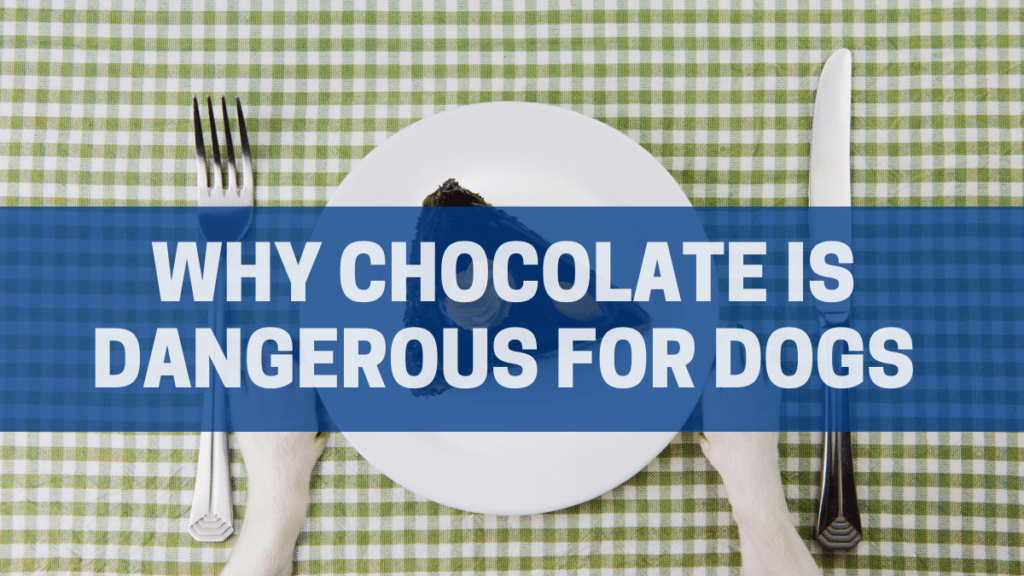Be My Valentine…Unless You’re Chocolate
What says “I love you” better than a heart-shaped box of chocolate?
Though this may get you out of the dog house with your special human, chocolate is toxic to dogs and could cause a life-threatening emergency depending on how much chocolate was consumed and the weight of the dog.
Today, we’ll cover the following:
- A Brief History of the Sweet Stuff
- What Makes Chocolate so Dangerous for Dogs?
- What Does Chocolate Poisoning Look Like?
- What To Do If Your Dog Eats Chocolate
- What Should I Get my Dog for Valentine’s Day?
A Brief History of the Sweet Stuff
First, how did chocolate become so entwined with Valentine’s Day?
Interestingly enough, the origins of chocolate as a Valentine’s Day gift has its roots with the famed candy company, Cadbury.
By the mid-1800s, Valentine’s Day was celebrated by most of the Western world and in 1861, Richard Cadbury, the son of Cadbury founder John Cadbury, created hand-drawn boxes of chocolate, featuring drawings of his family, Alpine scenes and to celebrate Valentine’s Day, a heart-shaped box.
We could think of Valentine’s Day as not just a Hallmark holiday, but a Cadbury one too.
What Makes Chocolate so Dangerous for Dogs?
Chocolate unfortunately though isn’t something that our dogs should be given on a holiday or any day of the year.
Chocolate is specifically dangerous to dogs due to theobromine and caffeine, which will speed up a dog’s heart rate and also overstimulate a dog’s nervous system.
Due to how these drugs interact with a dog’s biochemistry, the amount of chocolate consumption and the ingredients in the chocolate bar are really critical in determining whether or not you need to be rushing your pooch to the nearest veterinary hospital.
In fact, the American Kennel Club has a great list of products in terms of toxicity by theobromine, so you immediately know what products are problematic (ordered below by the concentration of the drug present in the products):
- Cocoa powder (most toxic)
- Unsweetened baker’s chocolate
- Semisweet chocolate
- Dark chocolate
- Milk chocolate
It is important to remember that though the concentration of caffeine and theobromine matters, it is only one part of the equation to know if your dog will experience chocolate poisoning.
If your dog were to end up eating one entire milk chocolate bar, that could be fatal based on the dog’s body weight. Specifically, mild chocolate poisoning will occur when a dog consumes 20 mg of methylxanthines per kilogram of body weight with cardiac issues occurring at 40-50 mg/kg.
The infographic below from VetsNow gives a nice visual of how chocolate can potentially affect dogs by size and amount consumed.
What Does Chocolate Poisoning Look Like?
Chocolate poisoning can appear within 12 hours of consumption and can last up to 72 hours depending on severity.
You might see any of the following symptoms if your dog has eaten any chocolate:
- Vomiting
- Diarrhea
- Restlessness
- Increased urination
- Tremors
- Elevated or abnormal heart rate
- Seizures
- Collapse and death
Again, the amount and concentration of the drugs that are harmful to dogs determines if their chocolate encounter will not end well.
Another factor to keep in mind is if your dog is older or has a heart condition since dogs with those conditions are most likely to be affected by chocolate’s negative effects.
What To Do If Your Dog Eats Chocolate
If your dog has eaten chocolate, a handy tool to determine the toxicity of the chocolate eaten is this calculator from VetsNow.
Make sure to get the details of the chocolate product they ate (the wrapper and/or packaging will list out the amounts of toxic chemicals present), and provide that along with your dog’s weight.
If you’re unsure about anything with the amount of chocolate eaten or start to see your dogs experience the symptoms listed above, make a call to your vet.
Think of it this way: if your dog eats a crumb of chocolate cake off of the floor and they’re a larger breed, they likely will only experience some slight digestive issues if at all. On the other hand, coming home to a bag of eaten Hershey’s kisses is an emergency that requires an immediate trip to the vet.
So What Should I Get my Dog for Valentine’s Day?
Sometimes the way to a dog’s heart is through their stomach, so try to give them the safe treats you know they love.
Things ranging from peanut butter balls to bully sticks to chicken feet are delicious options, but you know your pooch best.
And if you’re into making treats for your special four-legged friend, check out this post with various Valentine’s Day dog treat recipes.
And remember, your dog doesn’t need you to give them treats to know you love them, a hug will always get a boop and lick every time.
Let us know how you’re planning on celebrating Pawentine’s day this year by commenting below!

